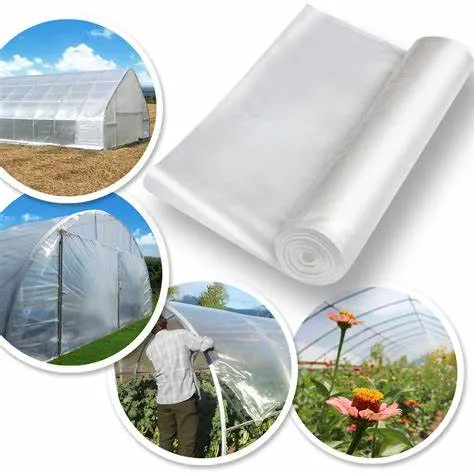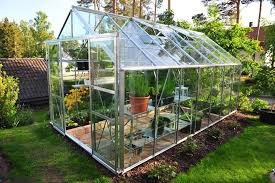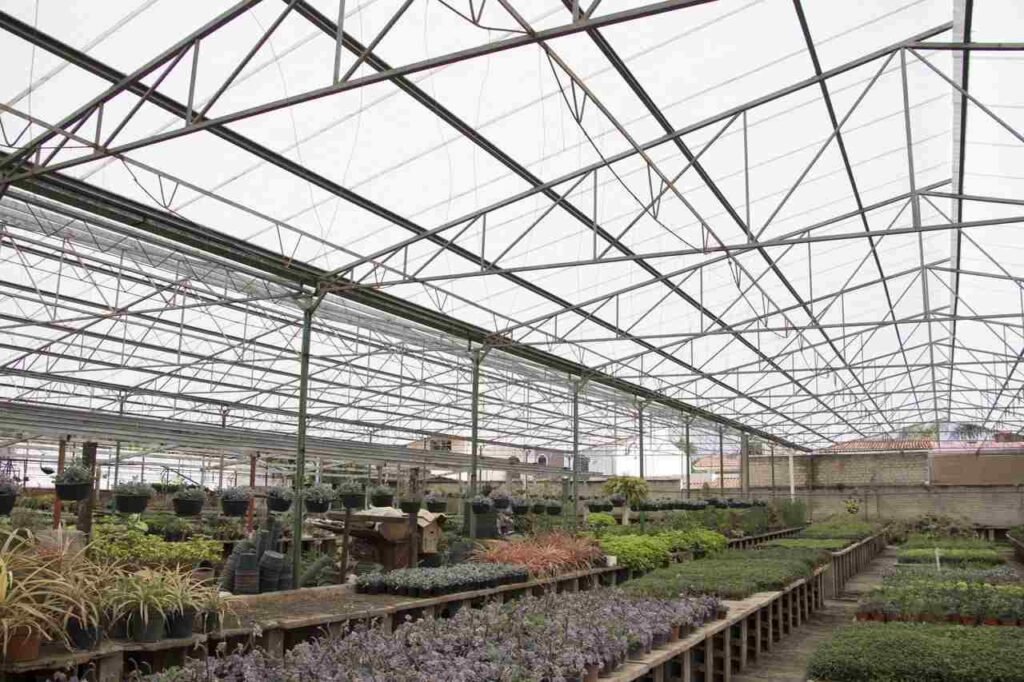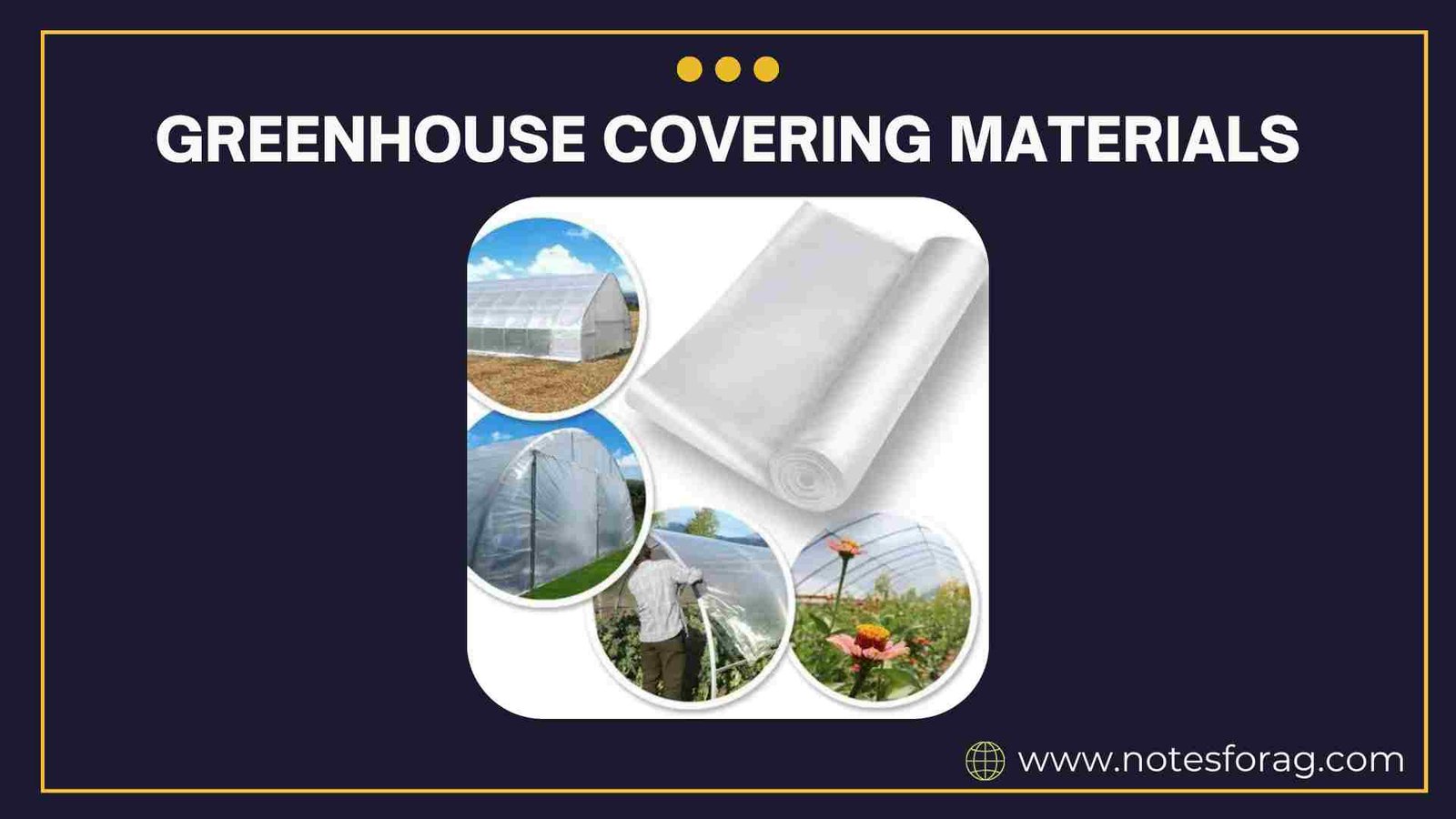Greenhouses play a vital role in modern horticulture and agriculture. They create controlled environments where plants can thrive, even in unfavorable weather conditions. The structure and covering material of a greenhouse significantly impact its effectiveness. In this comprehensive guide, we will explore different types of greenhouses and their covering materials, including the details depicted in the provided image. You’ll learn how each type works, its pros and cons, and which materials suit various gardening or commercial needs.
Introduction to Greenhouse Covering Materials
Greenhouse coverings act as a barrier between the outside environment and the plants inside. Their main job is to allow sunlight to enter while retaining warmth and protecting plants from external elements such as wind, rain, and pests. The ideal covering should be durable, cost-effective, easy to install, and able to create a suitable microclimate for plant growth.
Over time, many types of materials have been developed. From traditional glass to modern plastics and innovative films, each material has unique features affecting light diffusion, UV protection, insulation, and lifespan. Understanding these options helps in choosing the right one for the greenhouse’s purpose and location.
Summary of greenhouse covering materials
- Choosing the right greenhouse covering material is essential for optimizing plant growth and ensuring structural longevity.
- Each material glass, polyethylene, polycarbonate, acrylic, and fiberglass offers unique benefits and limitations.
- Aligning the material choice with specific needs and conditions is key to maximizing greenhouse efficiency and plant health.
Table of Contents
Glass Greenhouse Coverings
Overview
Glass is the oldest and most traditional greenhouse covering material. It is commonly used in commercial and botanical greenhouses due to its excellent clarity and durability.
Properties of Glass
Glass allows a very high amount of light to pass through, generally around 90%, ensuring plants receive ample sunlight for photosynthesis. It is rigid and strong, resistant to weathering and chemical damage. Unlike plastics, glass does not yellow or degrade with time, maintaining transparency for many years.
Advantages of Glass
Glass transmits sunlight exceptionally well, making it ideal for plants that require intense light. It is durable and can last several decades with minimal maintenance. Glass also has an attractive, classic appearance and can resist harsh weather conditions like strong winds and hail.
Disadvantages of Glass
Despite its benefits, glass is fragile and can break easily, posing safety risks and increasing repair costs. It is also heavy, requiring strong structural support that adds to construction expenses. Additionally, single-pane glass offers poor insulation, leading to heat loss on cold nights. The initial cost of glass greenhouses is higher compared to plastic alternatives.
Applications
Glass is often chosen for high-end commercial greenhouses and botanical conservatories where maximizing light quality and durability is critical. It is less common in smaller or hobby greenhouses due to cost and fragility.
Plastic Greenhouse Coverings
Plastic coverings have transformed greenhouse construction by offering cheaper, lighter, and flexible alternatives to glass. These materials come in films, sheets, or panels, with the most common types being polyethylene, polycarbonate, and acrylic.
Polyethylene (PE) Film

Overview
Polyethylene is the most popular plastic film used as greenhouse covering. It is a flexible, lightweight plastic typically sold in rolls and stretched over the greenhouse frame.
Properties
PE films transmit a good amount of light, about 85-90%, depending on their thickness and whether they contain additives. Films come in single or multi-layer versions, with double or triple layers providing better insulation.
Advantages
Polyethylene is very affordable, making it accessible for many growers. It is easy to install due to its flexibility and can fit various greenhouse shapes. Some PE films are treated to diffuse light, which helps reduce shadows and improves plant growth. UV stabilized films last longer by resisting sun damage.
Disadvantages
PE films generally last only 2 to 5 years before needing replacement. They can tear easily from wind, hail, or animals. Single-layer films offer poor insulation compared to rigid materials.
Applications
PE films are ideal for temporary or seasonal greenhouses, nurseries, and projects with tight budgets where cost and flexibility are priorities over longevity.
Polycarbonate Sheets
Overview
Polycarbonate is a rigid, lightweight plastic known for its high impact resistance and decent light transmission. It is often used in twin-wall or multi-wall sheets that provide good insulation.
Properties
Polycarbonate sheets transmit around 80-88% of visible light. Their multi-wall design traps air between layers, improving insulation and reducing heat loss. They have excellent UV resistance built into the material.
Advantages
Polycarbonate is very durable and can withstand hail and snow without cracking. Its multi-wall construction provides better heat retention. It typically lasts 10 years or more. The built-in UV protection prevents material degradation and protects plants inside.
Disadvantages
Polycarbonate has slightly lower light transmission than glass. It is more expensive than polyethylene films and can get scratched, which reduces clarity over time.
Applications
Polycarbonate sheets are common in commercial and hobby greenhouses that need durability and better insulation, especially in colder climates.
Acrylic Sheets

Overview
Acrylic, also known as polymethyl methacrylate (PMMA), is a rigid plastic used for greenhouse glazing. It offers light transmission nearly as good as glass but weighs less.
Properties
Acrylic sheets transmit over 90% of sunlight and resist yellowing due to UV protection additives. They are less impact-resistant than polycarbonate but more than glass.
Advantages
Acrylic offers excellent clarity for plants, is lightweight for easier handling, and lasts several years without significant degradation. Its UV resistance protects both the material and plants.
Disadvantages
Acrylic can crack under impact more easily than polycarbonate. It is more expensive than polyethylene films but less costly than glass. It can become brittle in very cold conditions.
Applications
Acrylic sheets suit medium-scale greenhouses where maintaining good light quality is important but where glass’s weight and fragility are concerns.
Other Greenhouse Covering Materials
Besides the main materials mentioned, a few other options are sometimes used for specialized greenhouse applications.
Fiberglass Reinforced Plastic (FRP)

Fiberglass panels are made by embedding glass fibers in plastic resin, resulting in strong, lightweight sheets. They offer moderate light transmission and good durability.
Advantages include resistance to corrosion and light weight. However, FRP tends to yellow over time, reducing light penetration, and can become brittle in cold weather. Fiberglass is typically used for small greenhouses or as secondary coverings.
Shade Cloths
Shade cloths are fabrics designed to reduce sunlight intensity rather than fully transmit light. They protect plants from excessive heat or light during hot seasons.
Shade cloths are easy to install and reduce heat stress on plants. However, they do not provide insulation or full weather protection and are used mainly as overlays in greenhouses or nurseries.
Factors to Consider When Choosing a Greenhouse Covering Material
Light Transmission and Quality
The covering material must allow enough light for photosynthesis while controlling light intensity and distributing it evenly. Materials with light-diffusing properties reduce harsh shadows and enhance growth.
Thermal Insulation
Good insulation is important to retain heat during cold weather and lower energy costs. Multi-layer plastics or double glazing provide better insulation than single-layer coverings.
Durability and Maintenance
The material must endure weather elements such as wind, hail, UV rays, and temperature changes. The frequency of maintenance and replacement costs are important when choosing the material.
Cost and Budget
Initial investment and long-term costs impact the choice. Polyethylene is cheap but requires frequent replacement. Glass and polycarbonate have higher upfront costs but longer lifespans.
Weight and Structural Requirements
Heavier materials like glass need stronger frames, increasing construction costs. Lightweight plastics can be supported by simpler structures, saving money.
Conclusion
Selecting the appropriate greenhouse covering material is crucial for optimizing plant growth and ensuring the longevity of the structure. Each material glass, polyethylene, polycarbonate, acrylic, and fiberglass offers distinct advantages and limitations, making it essential to align the choice with specific needs such as climate conditions, budget, and intended use.
Glass provides exceptional light transmission and durability, making it ideal for high-end commercial greenhouses. However, its high cost and poor insulation properties may not be suitable for all growers.
Polyethylene is an economical choice, offering good light diffusion and ease of installation. Its shorter lifespan and susceptibility to damage under harsh conditions are important considerations.
Polycarbonate offers superior insulation and durability, making it a long-term investment for growers in colder climates. Its higher initial cost is offset by its longevity and energy efficiency.
Acrylic combines excellent light transmission with moderate durability, suitable for medium-scale greenhouses. Its brittleness and higher cost compared to polyethylene are factors to weigh.
Fiberglass provides good insulation and durability but may yellow over time, reducing light transmission. Its use is less common but still relevant for specific applications.
In conclusion, the choice of greenhouse covering material should be based on a comprehensive assessment of environmental factors, budget constraints, and the specific requirements of the crops being cultivated. By carefully considering these elements, growers can select the most appropriate material to foster a conducive environment for plant growth and maximize the efficiency of their greenhouse operations.
Frequently Asked Questions (FAQs)
What is the most cost-effective greenhouse covering material?
Polyethylene is the cheapest option and very popular because it’s affordable and easy to install. It comes as thin plastic sheets that let enough sunlight through for plants to grow. Although it doesn’t last as long as other materials, it’s great for growers who want a low-cost greenhouse covering.
How long does a polyethylene greenhouse covering last?
Polyethylene usually lasts 2 to 5 years before it needs replacing. It can weaken from sun exposure and weather damage over time. UV stabilizers help it last longer, but eventually, it loses clarity and strength, so replacing it is necessary to keep plants healthy.
Which material provides the best insulation for greenhouses?
Polycarbonate offers the best insulation because its multi-layer sheets trap air, keeping the greenhouse warm in cold weather. This helps save energy by reducing heat loss. It’s also strong and durable, making it perfect for places with harsh winters.
Related Articles

